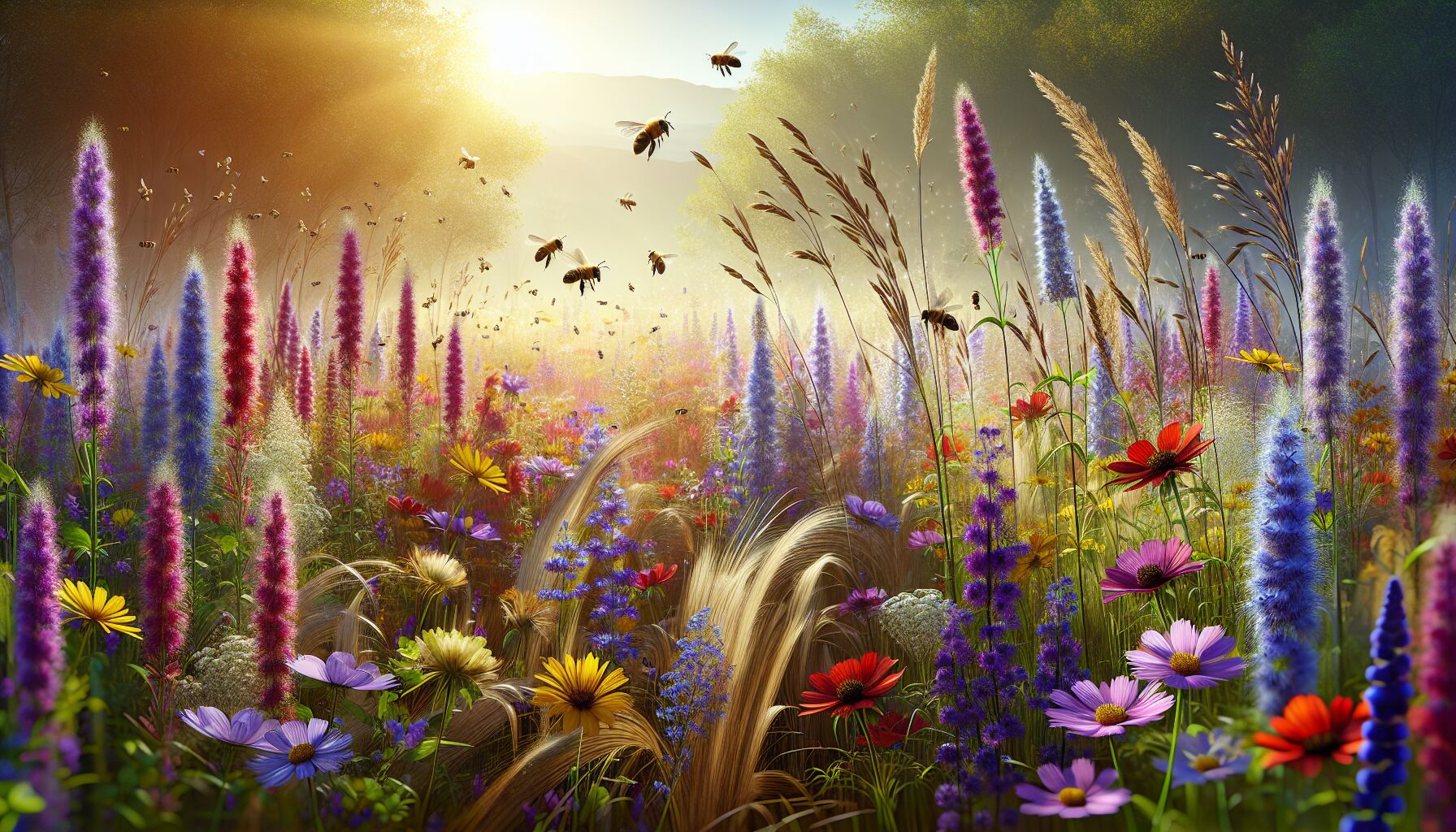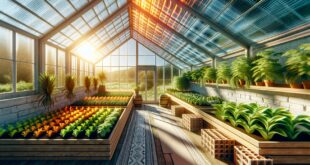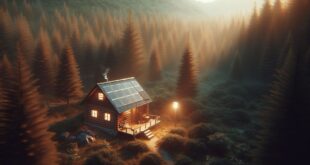 Traditionally manicured lawns may seem harmless, a mere aesthetic preference, but dig a bit deeper, and you’ll find they are anything but benign. Beneath the charming green façade lies a complex web of consequences affecting local ecosystems. The irony of the perfectly clipped grass is that it’s potable water’s biggest guzzler. Imagine this: in certain regions, lawns gulp over 60% of residential water use. That’s more water than we dedicate to drinking or bathing. This demand threatens water conservation efforts critically needed in many parts of our world.
Traditionally manicured lawns may seem harmless, a mere aesthetic preference, but dig a bit deeper, and you’ll find they are anything but benign. Beneath the charming green façade lies a complex web of consequences affecting local ecosystems. The irony of the perfectly clipped grass is that it’s potable water’s biggest guzzler. Imagine this: in certain regions, lawns gulp over 60% of residential water use. That’s more water than we dedicate to drinking or bathing. This demand threatens water conservation efforts critically needed in many parts of our world.
The perfection of these suburban carpets comes at another high price: chemical dependency. Fertilizers, pesticides, and herbicides are abundant, gliding smoothly on those early morning mists, yet far too often they journey beyond our playful pursuits. They seep into the ground and sprint into nearby streams, stealthy intruders to aquatic habitats. Nitrogen and phosphorus runoffs cause havoc, spawning algal blooms that suffocate underwater life like an unwelcome guest overstaying their welcome.
Then there’s the biodiversity angle—or the tragic lack thereof. Lawns invite just a handful of species to the party while sending every other critter a big, fat “do not invite” message. Imagine being at a party where only one type of snack is served. Boring, right? That’s what lawns do — they create monoculture deserts where pollinators and native plants struggle to thrive. Albert Einstein once quipped, “If the bee disappears from the surface of the globe, man would have no more than four years to live.” Though it sounds dire, the message is clear — biodiversity loss is a real danger.
By examining lawn alternatives, such as permaculture practices or wildflower meadows, we see the path forward to create balanced environments teeming with life. Permaculture promotes harmony, mirroring the rhythms found in forests and meadows. Encouraging native plants not only boosts local wildlife but also demands less of us, both in resources and time. Permaculture designs often work hand-in-hand with water conservation approaches, reducing reliance on precious resources and fostering a symbiotic relationship with our surroundings.
Ultimately, traditional lawns tell a story of missed opportunities for restoration and connection with the land. Reconsidering our landscapes can open doors to lush, living ecosystems that support a richer, more vibrant tapestry of life. Astonishingly, by stepping back, we can allow nature to flourish, giving back more than we could ever consciously tend with mowers and chemicals.
In seeking alternatives, we’re also embracing a more sustainable future, where each lawn is more than just a patch of green, but a haven for life and livelihood. It’s more than a choice; it’s a reconnection to the rhythms of earth and an invitation to listen closely to the world beneath our feet.
Alternatives to conventional grass lawns
 Implementing greener spaces doesn’t mean waving goodbye to the concept of a lawn entirely; instead, it invites us to redefine beauty. Traditional grass lawns, let’s admit, are like the one-size-fits-all T-shirt—a poor fit for most. But what if we tailored our lawns to suit the land’s needs rather than impose our own desires?
Implementing greener spaces doesn’t mean waving goodbye to the concept of a lawn entirely; instead, it invites us to redefine beauty. Traditional grass lawns, let’s admit, are like the one-size-fits-all T-shirt—a poor fit for most. But what if we tailored our lawns to suit the land’s needs rather than impose our own desires?
Consider a shift towards native plantings that naturally thrive without fussing over them like a temperamental houseplant. They invite a chorus of buzzing bees and fluttering butterflies, weaving a more intricate and delightful tapestry of life around your home. How about xeriscaping? It’s a fancy term for dry gardening. Replace thirsty grasses with drought-tolerant plants, and you’ll cut back considerably on water use—a real nod to those mindful of water conservation. Let’s be honest, who doesn’t like the sound of a reduced water bill?
The path of permaculture leads us through a world where thoughtful design meets natural processes, enhancing the symbiosis between us and the earth. Picture guilds, a term straight from permaculture jargon, where plants group together as companions, supporting each other’s growth. Imagine your garden like a community, each member thriving because they work together. It’s nature’s own perfectly functioning team.
“Nature does not hurry, yet everything is accomplished,” said Lao Tzu, reminding us that rushing isn’t nature’s speed—patience and intentionality are.
No one-size-fits-all approach exists when it comes to greener endeavors. Maybe it’s about mixing in a gravel path or stepping stones, creating texture and interest with less grass and more earth. Or planting a lush food garden that offers nourishment for body and soul—an act of self-reliance and empowerment. We often underestimate how much joy fresh homegrown tomatoes can bring. Could the answer be allowing sections of your yard to rewild, inviting in grasses and flora nature already intended to flourish there?
Wondering where to begin? MatchStickGarden.com offers insights into native gardening, and places like Audubon Society guide plant selection for specific agrarian needs. Let’s recognize the lawn anew—not as drudgery demanding time and resources, but a canvas for creativity, sustainability, and interconnectedness with all living things. In the weave of such transformation, you’re no longer just a caretaker of a plot—you’re a participant in the earth’s story.
Implementing sustainable lawn practices
It’s all about taking that conscious step, trading in old habits for a lifestyle that breathes life into both land and soul. You don’t have to transform overnight—nature doesn’t rush, and neither should we. Start with one thing. Maybe it’s about swapping part of your lawn for a vibrant patch of native wildflowers. Picture a burst of color that requires less mowing, less watering, and far fewer pesticides.
Consider the brilliance of a rain garden, a place where stormwater naturally collects and nourishes carefully chosen plants that thrive in such conditions. This simple solution can reduce runoff, act as a water filter, and offer habitats for local wildlife all at once. It’s like having a mini-ecosystem where everything from the leafy greens to the tiniest shrews find their rightful place.
For those with a passion for culinary delights, integrating edibles into your lawn opens doors to daily connection with your meals. How about some chives and basil right next to the front steps? Your door becomes a gateway to fresh flavors, skipping the store-bought journey entirely. Investing time in such sanctuaries can be a practice in mindfulness, where each small discovery connects you a bit closer to the cyclical rhythms of growing and harvesting.
Tools like Penn State Extension offer resources and guides for those embarking on these green ventures. There’s wisdom in starting small, relishing the journey over the destination. You know what? These changes do more than alter landscapes; they cultivate a legacy of reverence and care—qualities desperately needed in a world chasing quick fixes.
Keep in mind, you’re not alone in this journey. There are communities and resources aplenty, full of like-minded folks ready to share what they’ve learned. It’s about exchanging stories and techniques, discovering what fits your land, and ultimately being ready to adapt. As you walk this path, celebrate the successes and learn from those inevitable setbacks. Each step forward is a step toward living more harmoniously, not only with nature but with your own spirit.
 DS Haven In Light Of Things
DS Haven In Light Of Things






